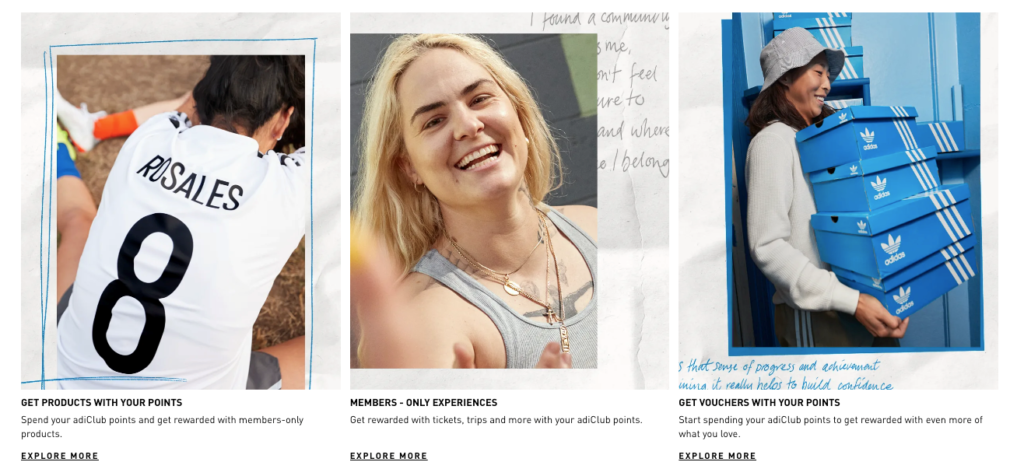STEVE ROGERS / 1 MARCH 2023
A mutually beneficial value exchange is a must-have in any ‘brand <> customer’ relationship. Essentially, it makes sure that both parties are satisfied with what they get out of the relationship.
Perhaps that’s also why in our recent Consumer Survey, there’s an increased customer awareness around data privacy. To be specific, 84% of respondents wanted brands to be more open and transparent about the information they collect and how they plan to use it.
Given the mutually beneficial value exchange, I think it’s fair to say that brands have a lot of work to do in this area.
And it’s not that shoppers don’t want to share their information — our survey actually revealed this isn’t true. In fact, 92% of customers would still hand over their data to a brand for the right reasons or benefits. Furthermore, shoppers aren’t withholding their information, but are more selective about with whom they share it.
And this is the crucial bit. Consumers are happy to share their data, but they want to get something back from it. We need to think about how we can incentivise and provide value to consumers and capture their data (more on this here).
Let’s delve into exactly how brands can master the art of value exchange and encourage today’s customers to share their personal information. Starting with a quick definition…
What is a mutually beneficial value exchange?
A mutually beneficial value exchange is where each party in the relationship shares something of value in return for something of equal and comparable value. This results in a positive outcome for both. It ensures both parties’ needs are met and can lead to long-term relationships.
For example, in marketing, consumers share their data in exchange for personalised offers. And brands receive additional customer insight to improve products and services.
Now, let’s look at this example in more detail.
The Earned Data Approach
In this scenario, the consumer voluntarily shares their data with a brand. This data is called ‘Earned Data’.
Put simply, earned data is a customer-first strategic approach that seeks to obtain personal information directly from the customer with their permission to use it to improve their brand experience. Also known as zero-party data, it is rich and highly relevant information that can provide valuable and actionable insights.
Most importantly, earned data is the best way to create a personalized experience for customers. And the better and more relevant customer experience, the more likely they will return and repeat it (and share more data). And so, the cycle continues.
Why is a value exchange so important?
Tricking your customers into sharing personal information is a one-way ticket to lowering brand trust and reputation.
And with greater data privacy awareness than ever, brands need to be clear and transparent about why they are collecting information. Essentially, if customers see that providing their data will result in an improved brand experience, they will be more likely to share it.
>> If you’re looking for inspiration, take a look at Zizzi’s case study to see how the brand tapped into customers’ preferences to create better experiences.
Value exchanges you are likely familiar with are rewards programs – where customers receive points, rewards, and level-up for spending. These programs can be considered one of the first value exchange models.
Let’s look at an example…
Adidas under the lens
Here’s one example of this approach: adiClub. Adidas’ free membership program rewards customers with 100 level points when they enrich their profile with personal preferences, like running, golf, or tennis.
Easy access to rewards: Customers can immediately view these points and level-up or spend them.
Transparency: It is clearly communicated the preferences chosen will help adidas to tailor product recommendations.

The challenge with this?
Rewards programs are less than ideal because the data is not live or contextual. While gathering this information can be useful, we know that customers’ preferences are constantly changing.
And so to deliver them the value exchange, they need you to tap into the latest insight into their preferences, behaviors, and motivators.
>> Take a look at this Michaels case study for an example of how to revive reactivation campaigns. You can also check out this case study from another industry: Foxy Bingo.
Key takeaway? For marketers adopting an Earned Data approach, it’s essential to get the value exchange just right. Show that the value exchange will be mutually beneficial and immediately put the collected data into action.
Here are a few tips to get it just right.
Three tips for mastering the art of the value exchange
#1: Ask for the right information at the right time
Even if the brand has the purest of intentions and the most transparent of data policies, if they ask for too much customer information too quickly, they will put customers off. Brands must start with the knowledge that shoppers are most comfortable sharing, for example, demographic information. And time the ask so they can use that information to assist the customer at that moment in the journey.
#2: Work out the right incentive
If people shop with a brand because of its sustainability credentials, offering them a cash reward in exchange for data is unlikely to be an effective incentive. Rewards don’t have to come in the form of discounts and coupons either. Our Consumer Survey showed that more people are willing to share data in exchange for better brand experiences, such as exclusive access or quicker paths to purchase.
#3: Be transparent about how you will use the data
The good news is customers will share their personal information if they see the beneficial outcomes. So it follows that brands should make that benefit as straightforward as possible.
And that doesn’t just include the first touchpoint with a prospective customer. Always allow customers to share more information to get a more relevant experience wherever they are in the customer journey.
Building strong relationships: The key to a mutually beneficial value exchange
For any brand, establishing what would be deemed a mutual value exchange is the first step.
While reward schemes and loyalty programs can be an excellent way of ensuring consumers get something back, they expect it to be relevant. And brands need the most up-to-date data to provide this more current and personalized experience.
Plus, this fresh earned data also helps with so many other areas of the business – starting with marketing strategy, but then looking at things like product development, pricing strategy, developing loyalty programs, using it to develop competitive advantage and so much more.
So, ultimately, pinning your strategy on fresh earned data not only supports customer retention and loyalty, it has a whole host of business intelligence benefits too.
Ready to capture more zero-party data? Instead of sending out mundane surveys, boost engagement with marketing gamification experiences. See how to quickly and easily earn zero-party data, right here.





